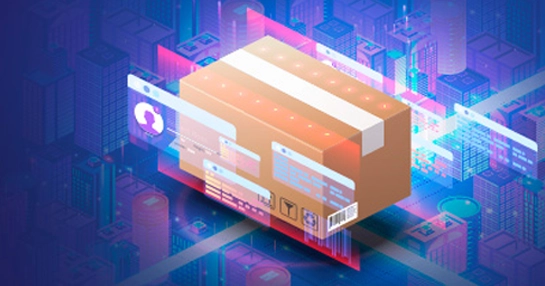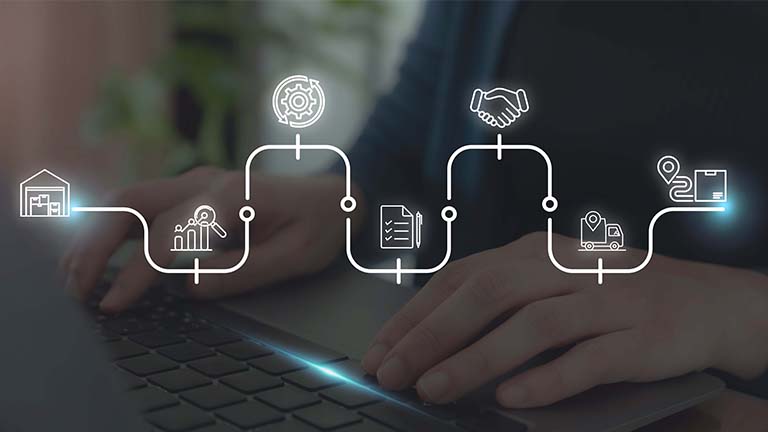What's an ideal scenario in a business? One where every purchase decision aligns perfectly with strategic goals — from finding the right supplier to settling the final invoice. This seems like a seamless flow, but it can be achieved. And this doesn't happen by accident. It's a well-orchestrated process known as source to pay, or S2P.
As businesses continue to face rising costs and complexities in supply chains (both at global and local levels), S2P puts forward a structured way to navigate the challenges, turning procurement into a value driver rather than a mere expense.
Let's explore the ins and outs of S2P, including how organizations can leverage their true potential.
CONTENT
Understanding Source to Pay (S2P)
Source to pay represents the full spectrum of procurement activities, starting with identifying needs and finally ending with payment. It integrates sourcing, contracting, purchasing, and payment into one unified framework. Organizations typically use S2P to streamline operations and gain control over spend. By connecting these elements, businesses can reduce inefficiencies and enhance supplier ties.
What is Source to Pay?
The source-to-pay (S2P) process involves sourcing, searching, negotiating with suppliers and hiring them for goods and services in exchange for payment. S2P involves demand preparation, sourcing, bidding, assembling a team, making decisions, signing contracts, transitioning from procurement to payment, and billing.
From spend management to vendor management to performance management to strategic sourcing, source to pay tracks it all. An efficient and effective source-to-pay procurement procedure relies on specialized software and data collection tools. S2P also helps in organizing data into categorized files and simplifies finding suppliers.
S2P helps enterprises save time, effort and resources on repetitive tasks and put the focus on activities that actually drive value. Source-to-pay software can help enterprises cleanse, validate and classify spend data — so that they can analyze and identify opportunities that drive maximum savings.
Ready for Growth? GEP Has the Answers
Transform your business with our AI-powered source-to-pay solutions
Understanding the Source-to-Pay Lifecycle
The source-to-pay lifecycle outlines the journey from a business' need identification to payment completion. It provides a roadmap for procurement teams to follow, ensuring consistency and efficiency. This cycle adapts to various industries, incorporating tools such as AI to enable better decision-making. A typical starting point would be vendor identification, then move through evaluation and contracting, and finally end with payment.
In this lifecycle, several sub-sections play key roles. Category management offers enterprise-wide visibility and real-time market intelligence. It enables the creation of strategies for direct and indirect spend. Sourcing optimizes supplier selection and cost savings through RFx processes and auctions. Contract management handles risks and compliance with intelligent lifecycle solutions. Third-party risk management (TPRM) safeguards continuity by monitoring risks throughout the vendor lifecycle. Other areas include spend analysis for identifying savings, supplier management for performance enhancement, and procure-to-pay for automating transactions.
Identifying Vendors
Finding vendors (those that meet the requirements) marks the beginning of the S2P lifecycle. Enterprises need to ensure that they have done thorough market research to pinpoint suppliers who meet specific needs.
- Use RFIs, RFPs, and RFQs to gather information.
- Make use of e-auctions for competitive bidding.
- Analyze market trends so that you can identify potential partners.
Other than ensuring a strong pool of vendors, this step is critical in setting the stage for effective sourcing. Enterprises also have the option to use AI-powered S2P suites, such as GEP SMART, for deep market intelligence and support for direct as well as indirect materials.
Supplier Evaluation
Once vendors are identified, supplier evaluation is the next step that assesses vendors against criteria such as price, quality, and reliability.
- Check RFx responses for completeness.
- Evaluate financial stability and past performance.
- Evaluate delivery times and order quantities.
For example, a manufacturing company can vet suppliers on raw materials by giving them scores based on quality parameters and their on-time delivery records. This critical check ensures only the best move over to the negotiation stage.
E-Auctions
E-auctions are useful as they make the sourcing process competitive, enabling real-time bidding, which leads to better prices. Here, suppliers compete by lowering their bids, while buyers monitor progress through digital platforms.
- In the case of reverse auctions, suppliers bid down their prices to offer the most competitive rate to the buyer.
- Automated scoring helps enterprises to aggregate bids fairly.
- Real-time visibility for all participants.
These tools can save 18 to 40% on costs, making them a powerful addition to the lifecycle.
Payment and Delivery of Goods
These are the final stages where goods are received, and payment is completed, all the while ensuring deliveries match orders and payments are accordingly processed, right on time. Furthermore, automation at this stage can help prevent disruptions in operations.
- Set up supply schedules for timely arrivals.
- Use automated systems for invoice matching.
- Monitor for compliance with contract terms.
Proper handling at this point maintains cash flow and supplier satisfaction.
Contracting and Negotiation
After evaluation, contracting solidifies agreements. Negotiation focuses on terms that benefit both parties, such as in pricing and delivery.
- Select top vendors for detailed talks.
- Negotiate volumes for cost reductions.
- Centralize documents for easy access.
In all, this phase locks in value, reducing future risks for enterprises.
Simplify Source-to-Pay Process by Using Automation Software
Automation transforms the source-to-pay lifecycle by handling repetitive tasks. It also:
- Integrates contract lifecycle management.
- Enables electronic procurement and payments.
- Manages supplier information centrally.
Such capabilities help cut down errors and free up teams for strategic work, leading to faster cycles and lower risks.
Gartner Predicts 40% of Sourcing Will Move Outside Procurement by 2027
A power-packed GEP bulletin on how you can leverage total procurement orchestration to drive strategic value
Top 10 Steps of the Source-to-Pay Process
The S2P process is a planned path that turns procurement into a smooth, value-driven process. It helps businesses with everything from figuring out what they need to make payments, making sure everything runs smoothly and is in line with their strategic goals.
Let's take a look at the steps that lead to lower costs and better operations.
Demand
The first step in the S2P process is to identify demand, which is when businesses figure out what goods or services they need. This important step makes sure that purchases are in line with business goals, which helps avoid wasting money. It starts by talking to different departments to find out what they need, like office supplies or raw materials.
To make sure something is possible, budgets and existing contracts are checked. To avoid ordering too much, accurate forecasting is used. For example, a marketing team might need materials for an event, which would require a budget check to make sure there is money available.
- Get departments involved to make their needs clear.
- Look over budgets and contracts with current suppliers.
- Make sure your forecasts match demand exactly.
This step sets the stage for efficient sourcing and cost control by making a clear demand profile.
Finding Sources
Sourcing helps enterprises find suppliers who can meet those needs once demand has been set. This step builds on what you learned about demand by using data to look at vendor options in a smart way. Historical spend analysis shows how well suppliers have done in the past, which helps you choose the right one. Price changes and other market trends help shape sourcing strategies, and keeping a list of possible vendors makes sure there is a strong pool. For instance, a store might look at past packaging suppliers to find ones that are cheaper.
- Look at past spending to see how it has changed over time.
- Check market trends for prices and availability.
- Make a list of vendors to build a diverse pool of suppliers.
Good sourcing gets you competitive terms, which is the first step to winning a bid.
Getting Ready to Bid
Preparing a bid means turning sourcing insights into requests that can be acted on. This step means writing RFIs, RFPs, or RFQs to get responses from suppliers. Fair evaluations are made possible by clear criteria, like quality or delivery times. Using digital portals makes submissions easier and faster, which is good for the process. For example, a construction company could send out an RFP for steel suppliers that includes quality standards.
- Write RFIs, RFPs, or RFQs to get proposals.
- Set clear standards for judging responses.
- Use digital portals to make it easier to submit bids.
This preparation encourages competition, which makes sure that suppliers give their best deals.
Making Choices
Decision making looks at bids to choose the best supplier. It builds on the bidding process by giving scores to responses based on set standards, like cost or dependability. To avoid hidden costs, the total cost of ownership (which includes maintenance or logistics) is taken into account. Getting stakeholders involved makes sure that the project meets the needs of the business. For instance, a hospital might choose a medical supplier based on how much it costs and how well it is certified.
- Use set criteria to fairly score bids.
- Look at the total cost of ownership to see how much value it will have in the long run.
- Get stakeholders involved to make sure everyone is on the same page.
Making smart choices lowers risks and raises value, which makes contracting easier.
Managing Contracts
When a supplier is selected, contract management makes sure that the agreements are properly followed. This step keeps an eye on whether suppliers are adhering to the rules, including delivery times; it also keeps track of their performance to make sure the quality stays high. Changes are made as needed, and obligations are written down to make things clear. For example, a technology company might want to keep an eye on how well a software vendor is doing to ensure on-time updates.
- Keep an eye on how well the terms of the contract are being followed.
- Handle changes to make sure they fit.
- Keep track of responsibilities to fix accountability.
This ongoing oversight improves relationships with suppliers and lowers risks.
Signing the Contract
Signing the contract makes the agreement final and builds on the process of making decisions. It means carefully going over the terms to make sure they match what was agreed upon. To make sure everyone’s onboard, approvals are taken from key stakeholders such as finance or legal teams. For instance, a store making a deal with a logistics company makes sure that the terms of delivery are clear before going ahead.
Transition to Procure to Pay
Transition to P2P shifts focus from strategy to execution. Procurement teams assume responsibilities and ensure a smooth shift. Furthermore, order systems are set up to facilitate purchasing, and monitoring protocols track progress. For instance, a manufacturer might establish purchase order workflows to streamline component orders.
- Transfer responsibilities to procurement teams.
- Set up order systems for efficient purchasing.
- Establish protocols to monitor execution.
This seamless transition ensures operational continuity and prepares for procurement activities.
Procurement
Procurement executes the purchasing plan, building on the contract foundation. It involves generating purchase orders, inspecting deliveries for quality, and approving receipts to confirm accuracy. A tech company, for example, might procure microchips, verifying quality to prevent production delays.
- Generate purchase orders for approved items.
- Inspect deliveries to ensure quality.
- Approve receipts to confirm order accuracy.
This step ensures goods or services meet expectations, maintaining operational flow.
Accounts Payable Invoice Processing
Invoice processing verifies bills to ensure accurate payments. This step matches invoices with purchase orders and delivery receipts, screens for authenticity to prevent fraud, and routes for approvals. A university, for instance, might match invoices for lab equipment to ensure correct billing.
- Match invoices with orders and receipts.
- Screen invoices for authenticity.
- Route for necessary approvals.
Accurate processing prevents payment errors and supports financial discipline.
Payments
Payments conclude the S2P process, making sure that suppliers are paid on time. Amounts are reconciled to match invoices, settlements are issued on time, and records are updated for transparency. For example, a logistics firm might pay a fuel supplier promptly to maintain trust.
- Reconcile payment amounts with invoices.
- Issue settlements to meet deadlines.
- Update financial records for accuracy.
Timely payments strengthen supplier relationships and ensure smooth cash flow management.
Don’t Let Procurement Become a Hidden Barrier and Hold You Back
Explore how you can use AI to transform procurement workflows across the source-to-pay process
Benefits of Implementing Source to Pay
Implementing source to pay brings transformative benefits for the procurement organization. It unifies processes for better outcome. Benefits include cost savings from the start, increased transparency through data categorization, strengthened compliance, improved supplier relationships, accurate forecasting, policy consistency, a single unified course, enhanced networking, and risk depletion.

Cost Savings
S2P saves big money by utilizing strategic sourcing and automation. Prices go down when people bid against each other and when they buy things online. Centralized buying stops people from spending too much on things they don't need. GEP notes that invoice processing can help save up to 80%. For instance, a store that renegotiates contracts can save a lot of money. These savings also make finances more efficient.
Generating Value for Your Business
S2P aligns procurement with business goals, fostering innovation via supplier partnerships. Furthermore, it improves ROI by optimizing spends, such as collaborating on sustainable products. This strategic focus drives competitive advantage.
Transparency Across Procurement
Source to pay makes sure that procurement teams can see all of their transactions from start to finish. Also, the real-time dashboards in S2P suites keep an eye on spending and find problems like unauthorized purchases. This clarity can help with audits and build trust with stakeholders, making sure that decisions are in line with priorities.
Increased Operational Efficiency
S2P streamlines workflows with automation, reducing cycle times. GEP notes that S2P capabilities can automate 70% of tasks and thus drastically minimize errors and related issues. For instance, global firms standardize processes, which in turn enhance resource utilization.
Enhanced Compliance and Risk Mitigation
S2P has the capability to embed compliance controls, ensuring adherence to policies. Furthermore, third-party risk management (TPRM) flags supplier issues such as financial risks. Together, these capabilities protect enterprises against disruptions and simplify regulatory reporting.
Improved Supplier Collaboration
S2P fosters supplier partnerships through data sharing. Performance reviews drive improvements, including streamlined deliveries. It would be worthwhile to mention that strong ties enhance reliability and innovation.
Real-Time Spend Visibility
S2P offers instant spend insights via dashboards. Firms monitor categories to avoid overruns, ensuring proactive financial control.
Data-Driven Insights
S2P analytics predict trends and evaluate suppliers. Retailers might renegotiate on the basis of performance data, ensuring informed decisions that boost competitiveness.
Technology Integration
S2P integrates with ERP and AI tools, ensuring scalability. GEP SMART, for example, connects with legacy software systems, enabling rapid deployment. This also keeps systems future-ready.
When Should Businesses Use Source to Pay?
Source to Pay (S2P) is not a one-size-fits-all solution. It works best in certain business situations where procurement is complicated, costs are high, or things aren't working well, and a structured approach is needed. When businesses want to change their procurement from a disorganized, reactive process to a strategic, value-driven function, they turn to S2P.
Whether a company is scaling operations, navigating volatile markets, or seeking to optimize supplier relationships, S2P gives a framework to achieve these goals. It solves problems (those that make it tough to grow and make money) by bringing together sourcing, contracting, purchasing, and payment into one system.
S2P is very helpful for businesses with complicated supply chains. Manufacturing, healthcare, and automotive are just a few examples of industries that work with thousands of suppliers at different levels. When procurement processes are broken up, they don't work as well, which can cause things like late deliveries or quality that aren’t always the same. S2P gives you full visibility from start to finish by connecting supplier management with payment processes.
Source-to-Pay Automation and Other Upcoming Tech Advancements
Automation in Source to Pay revolutionizes procurement by digitizing workflows. It can easily handle tasks such as invoice matching as well as supplier onboarding with minimal human input. While cloud-based solutions offer scalability and real-time collaboration, generative AI and ML enhance forecasting and risk assessment. These advancements cut costs and boost accuracy.
Enhanced supplier relationship management uses analytics for deeper insights. Systems of execution promise autonomous decision-making, as noted in recent reports. Yet, AI serves as a tool, not a substitute for human judgment. Experts opine that to avoid relying too much on technology, you need to balance it with strategic oversight. Blockchain and IoT are examples of future technologies that could make transactions even safer.
Conclusion
Source to pay makes it easier for people to use and follow spending rules by giving them easy-to-use, consumer-style eCommerce website type purchasing tools. Businesses can avoid doing the same things over and over again with advanced S2P software. This saves time, effort, and money, bringing the focus back on things that add more value.
When businesses are having trouble growing, dealing with high costs, complicated supply chains, supplier problems, compliance needs, digital transformation, or wanting to strengthen their ties with suppliers, they should turn to S2P. It works best for companies that are willing to spend money on digital tools and make a long-term commitment to strategic procurement. By dealing with these situations, S2P makes things more efficient, saves money, and makes them more resilient, which leads to long-term success.
Looking ahead, source to pay holds promise for reshaping global supply chains. As markets evolve with demands for sustainability and digital disruptions, S2P can leverage emerging technologies to build resilient, ethical procurement practices. Those that adapt will drive innovation, turning procurement into a catalyst for growth.
Frequently Asked Questions
Implementing an S2P solution can pose several challenges that procurement teams must navigate carefully. Resistance to change is the biggest problem, especially since workers tend to stick with processes they know. When different systems are combined, data quality problems can also happen, which can cause mistakes that make people lose trust. Complex IT infrastructure can also complicate seamless connections, demanding bespoke solutions on the spot. Supplier onboarding can drag. And if not streamlined, the onboarding process could eventually delay the benefits. Costs and resources are hard for small and medium-sized businesses to handle, and training users takes time but is necessary to get them to use the software. That said, good planning makes sure these things turn into stepping stones.
Robust platforms such as GEP SMART can help with the issues mentioned above with easy-to-use dashboards and flexible integrations, making the transition smooth and easy.
Businesses overcome source-to-pay implementation challenges with the help of strategic approaches that are built on solid foundations. Start with a clear integration plan to tackle data silos and legacy systems. Involve IT experts early for smooth connections via APIs. It's advisable to go for platforms that are known for strong integration. For change management, enterprises that engage with stakeholders right at the outset perform better.
Further, ensure that you tailor training programs to specific roles, ensuring you communicate the benefits in a transparent manner. Incorporate digital adoption functionalities within the software for ongoing support. It actually goes a long way. GEP's AI-first solutions simplify these steps, accelerating value realization for enterprises. Persistence pays off, turning obstacles into opportunities for enhanced efficiency.
Supplier performance management holds a central place in S2P, ensuring that suppliers deliver goods or services just as promised throughout the cycle. The process begins with assessing risk factors in terms of financial health and reputation. Constant monitoring helps enterprises track quality and timeliness, enabling them to spot issues early on; while improvement plans will enable collaboration, aligning suppliers with business goals. Together, these build resilient relationships and optimize costs. GEP emphasizes that effective management reduces risks and drives innovation via data insights. Without it, procurement falters. Strong performance management turns suppliers into partners, enhancing overall S2P success.
Source to pay differs from general procurement in scope as well as in focus. Procurement covers broad activities such as buying goods and managing supplies. S2P integrates strategic elements, from sourcing suppliers to final payments. It includes upstream tasks such as category management and downstream ones like invoicing. This holistic view optimizes the entire chain.
S2P is an advanced framework that is geared toward elevating procurement through technology. While procurement on its own might handle daily transactions, S2P specializes in driving long-term value. Understanding this distinction helps organizations choose the right approach for their needs.











